

| Jamie Rapp | Fall, 2005 |
| U.S. History 1302 | R. Hines, Instructor |

LANDMARKS:
What was once a thriving bordello is now in ruins.
The Widow Dach - The story about the Widow Dach is interesting and left chills on the back of my neck. Marie Dach was a German immigrant whose husband, Anton Dach, died of cancer in 1930. She was raising three young children and had hired Henry Stoever as a farm hand. Dick Stoever had contacted the sheriff’s department wanting them to locate his brother Henry after a mysterious letter had been received in February 1933 supposedly sent from Henry to his daughter. The investigation was led by Deputy Sheriff Jim Flournoy (he was later the sheriff of La Grange during the infamous Chicken Ranch investigation). Flournoy noticed a hen house that was built from old lumber but had fresh cuts on edges of the wood. After the sheriff received permission from Dach to search the former farmhands’ room, he searched the adjacent hen house. While searching the hen house, he found a freshly disturbed area, approximately 3’x6’, in the dirt floor. Stoever’s remains were found after digging only a few feet. Mrs. Dach was arrested, and later tried for murder in May of 1933 and consequently found guilty. She was sentenced to die in the electric chair. However, while being held in jail waiting for her appeal she starved herself to death. The Chamber of Commerce ladies, who work in the old jailhouse, related stories to me of papers flying off of desks, a typewriter appearing to be “shoved” from its stand, and many other incidences which convinced me to believe in ghosts!
INTERVIEWS - Transcripts from the three interviews that I had the oppourtunity to conduct. Mr. Harvey Dipple Mr. Gary Prause. Mrs. Kathy Carter
BIBLIOGRAPHY:
abclocal.go.com/ktrk/ontv/history/history_chicken_ranch_html (ABC13.com:The Best Little Whorehouse in Texas - printed version of Marvin Zindler's expose on the famed brothel) - This link was very informative (and is used as a link in my report) regarding the expose that Mr. Zindler did on the Chicken Ranch. I used the "closed" sign from their web page as a reference shot at the beginning of my paragraph about the chicken ranch. I also compared my recent photos to their historical photos of area making sure that the ruins pictures that I took were taken from approximately the same location.
Abolafia-Rosenzweig, Mark. Monument Hill State Historical Park:The Dawson and Mier Expeditions and Their Place in Texas History. April 1991. I purchased this copy while attending "Texas Heroes Day" in September 2005. This is an extremely informative booklet written about Monument Hill in La Grange and has great information regarding the conflicts that lead to the Mier and Dawson massacres.
Fayette County Courthouse, La Grange, Texas - I picked up a pamphlet from the foyer of the courthouse which contained interesting information regarding the renovation and grant that funded it.
Fayette Heritage Museum & Archives, 855 S. Jefferson, La Grange, TX 78945 The staff at the museum were very helpful and knowledgable about their towns history. Donna & Sherie always offered any additional information that they knew. The files that they have on events, people, landmarks and events that have occurred is amazing.
Flournoy, Jim (as told to B. Mattingly) Famous Detective Cases. June 1935. Volume I No. 4 "The Fansatic Tale of Widow Dach" An amazing article written before Sheriff Jim became famous in Fayette County. The article was extremely informative regarding the investigation and eventual prosecution of Mrs. Dach. Thank you Rachel for telling me about this one!
Foster, William C. Spanish Expeditions Into Texas 1689 - 1768. University of Texas Press. Austin
Friedman, Saul "The Chicken Ranch" The Texas Observer. June 21, 1968. - I read the article, however did not find a lot of information that I could use for my report.
Handbook of Tecas Online"Monument Hill=Kreische Brewery State Historic Site" I have linked this particular site in my project (At Kreische Brewery/Home paragraph) The report was very informative and interesting.
La Grange Journal Volume 54. August 31, 10933. Things in General". Remarks by the Editor. This article was informative about the Dach trial and her death.
Leffler, John"La Grange Texas" Handbook of Texas Online.
Lotto,F. Fayette County, Her History and Her People Schulenburg. 1902
McSpadden, Wyatt "The Best Texas Barbecue". Vista USA - Exxon Travel Club Magazine. Fall 1999 Issue. This article referenced the Prause family's barbecue and the 3rd generation of Prause men are pictured it the article. I scanned the picture and used it as a reference on the transcript of Gary Prause's interview. The original copy of the magazine was loaned to me by Gary Prause since I could not locate a copy from Exxon to use.
Meiners, Carolyn and E VonRosenbert. "History of La Grange, The County Seat". Fayette County,Texas. Heritage Volumes I & II. 1996 Version. - I utilized both of these books locating information about the county, the ancestors and historical events.
Mueller, Barbara Frenzel. "Biography of Col. John H. Moore" Volume II Fayette County History.
Pilcher, Walter F"Chicken Ranch" Handbook of Texas Online
Reinert, Al "Closing Down La Grange" Texas Monthly. October 1973. Pgs 46-53. - This article was very informative. Great information regarding the expose by Houston Reporter Marvin Zindler and the eventual closing of the chicken ranch.
Personal Interview - Mr. Harvey Dipple Thursday, September 8, 2005. La Grange, Texas
Personal Interview - Mr. Gary Lee Prause Friday, September 9, 2005. La Grange, Texas
Personal Interview - Mrs. Kathy Carter Friday, September 9, 2005. La Grange, Texas
I WOULD LIKE TO THANK THE FOLLOWING PEOPLE FOR WITHOUT THEIR HELP AND PATIENCE THIS REPORT WOULD NOT HAVE BEEN POSSIBLE:
Mr. Harvey Dipple Thank you for allowing me my first interview. After speaking with you I felt as if I was welcome in La Grange and became a part of your wonderful community.
Gary and the entire Prause Family Thank you for your help and for the wonderful stories and pictures you shared with me about your family and your home town.
Kathy, Donna and Sherie @ Fayette Heritage Museum Thnaks you for your patience and helpfulness on my MANY trips to acquire the information that Was somehow forgotton on previous trips!
Rachel Bolfik & Liz Dujka - La Grange Chamber of Commerce Thank you both for always being available to help me, for never treating me like my questions were a hindrance to your day. Your assistance with my research, and your availability was above and beyond - I sincerely appreciate you both!
Mr. Dale Martin - Texas Parks & Wildlife - Monument Hill Thank you for helping me with additional information regarding Texas Heroes Day and the significance of the yearly gatherings. Thank you for the Mier survivors picture and for all of your prompt replies on those last frantic days I was finishing my report.
Alex (Rapp) Carter Thank you for all of your help with my html questions!
To my cousin Cathy Roye, thank you for going with me on our "road trips" and for standing guard at the fence!
Mr. Robert Hines Thank you for this assignment. And more importantly, thank you for helping to remind me that I had a passion for History in high school and I will not let it die this time.
And finally, to my life's partner and husband, Deane Rapp, thank you for your support and belief in me. Thank you for making my life long dream, to be a college student, finally become a reality. Thank you for always being ready to drive to wherever I needed to go, to get "the best shot". Thank you for all the trips that we made to La Grange together and for helping to make a good point better. I love you and will always cherish our friendship and awe-inspiring relationship.


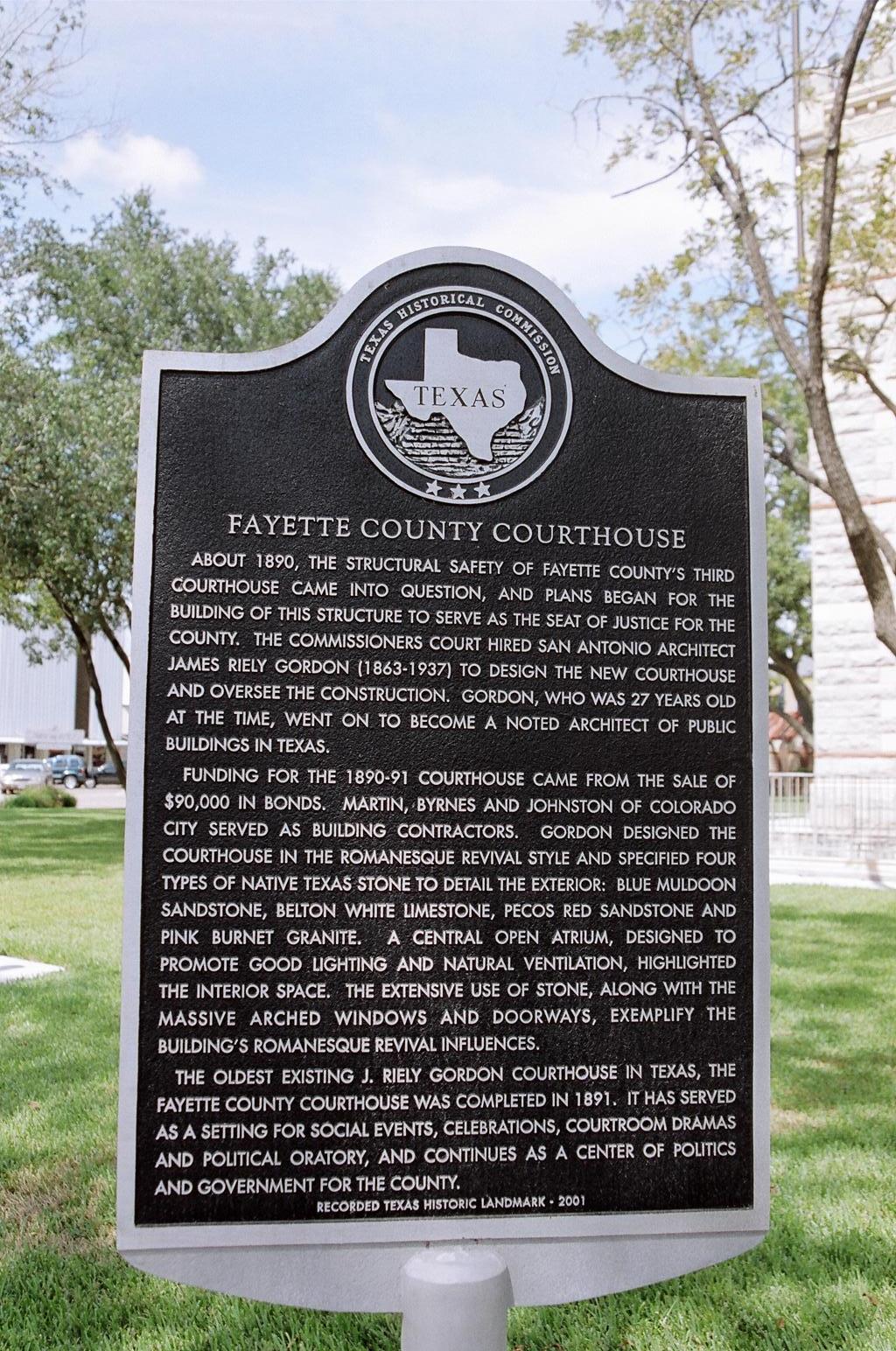
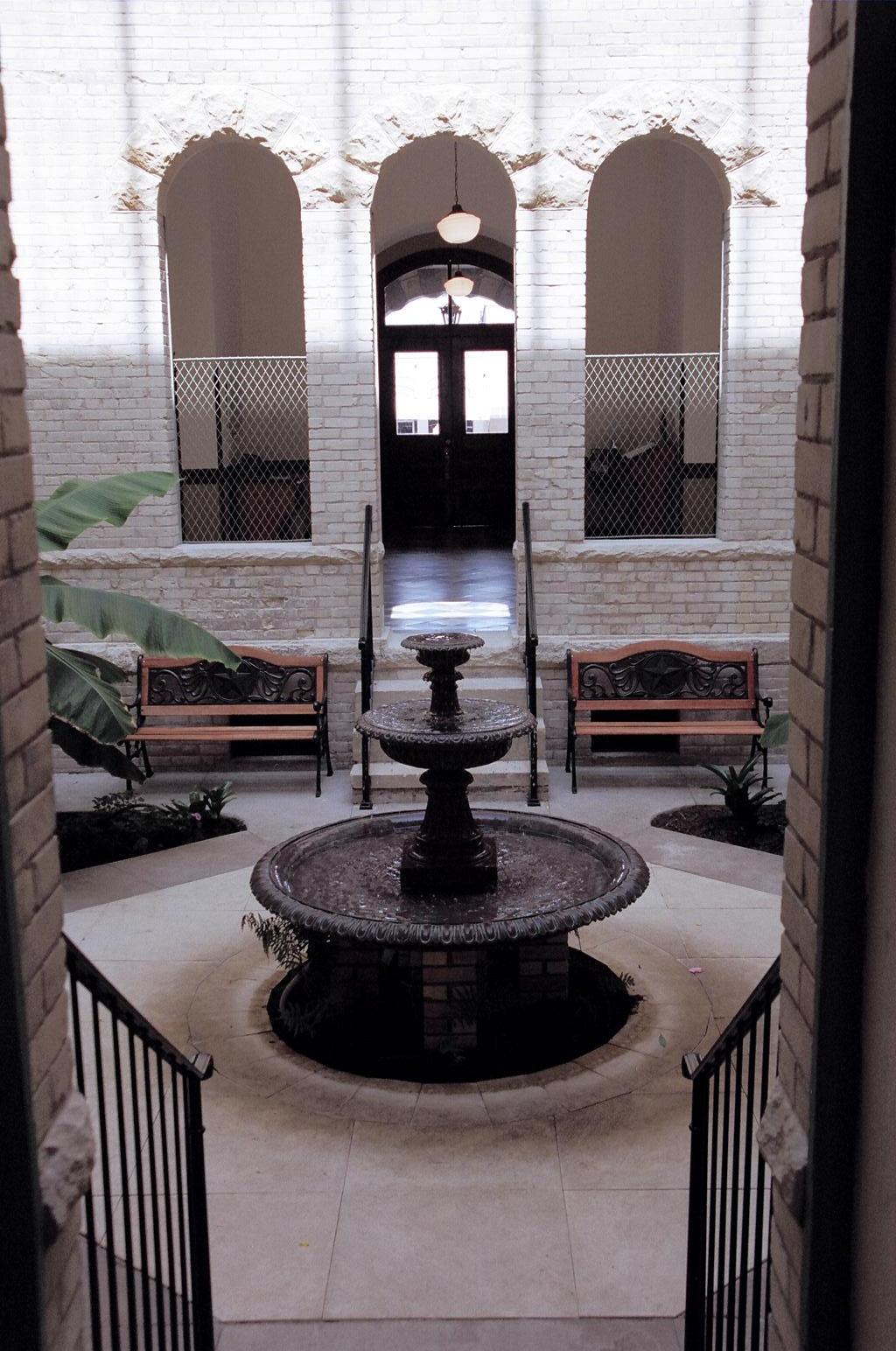
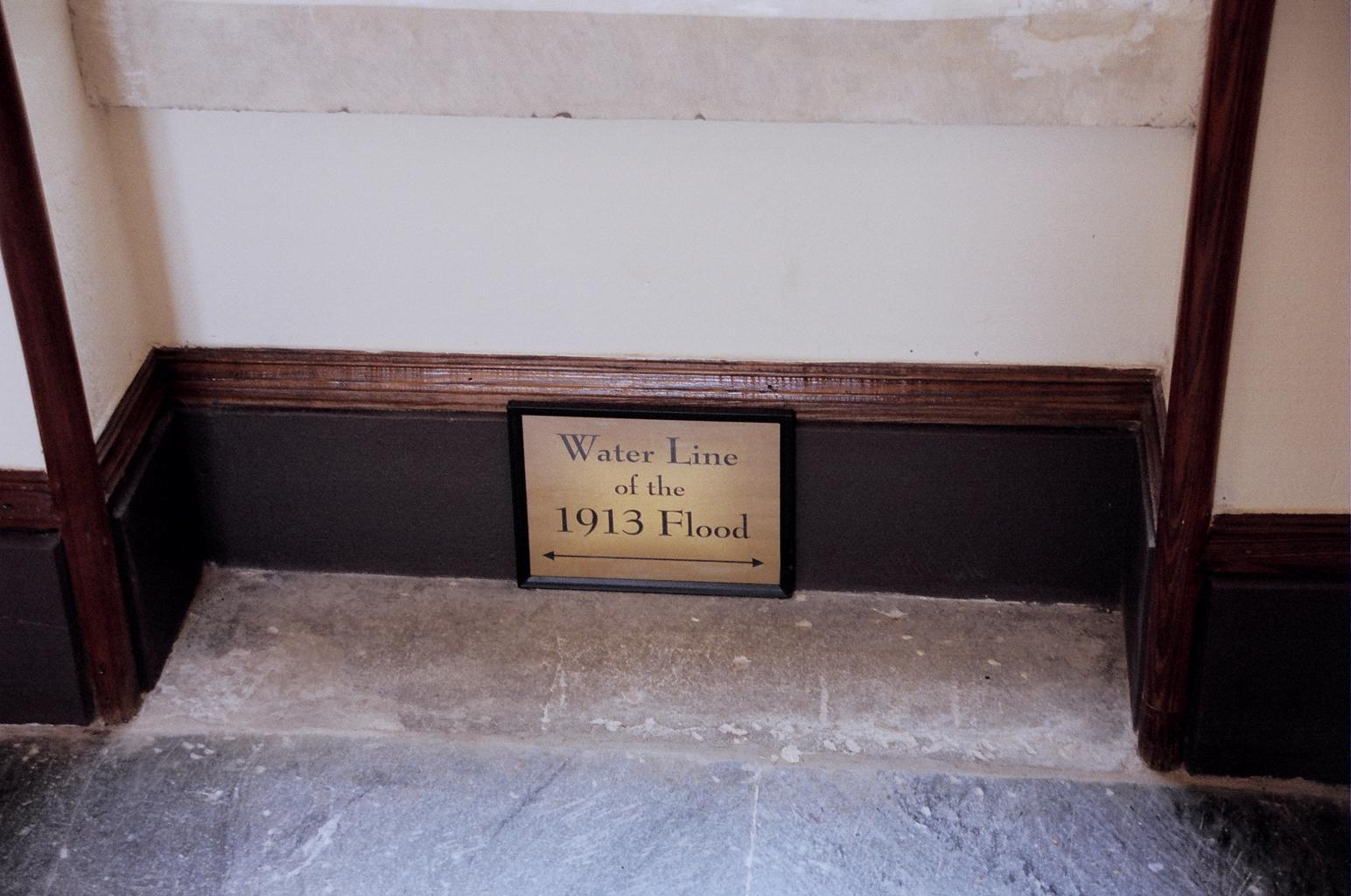



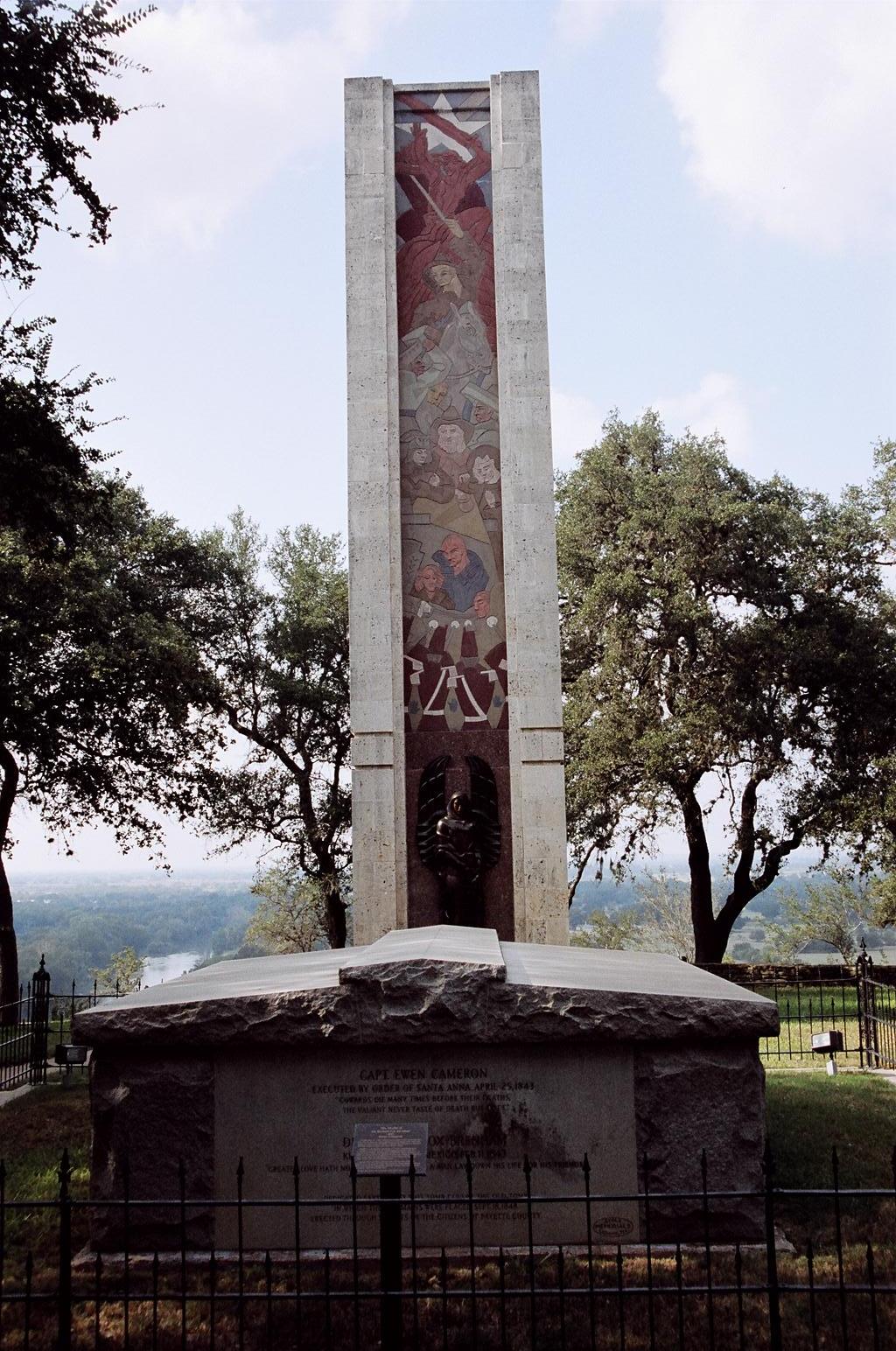
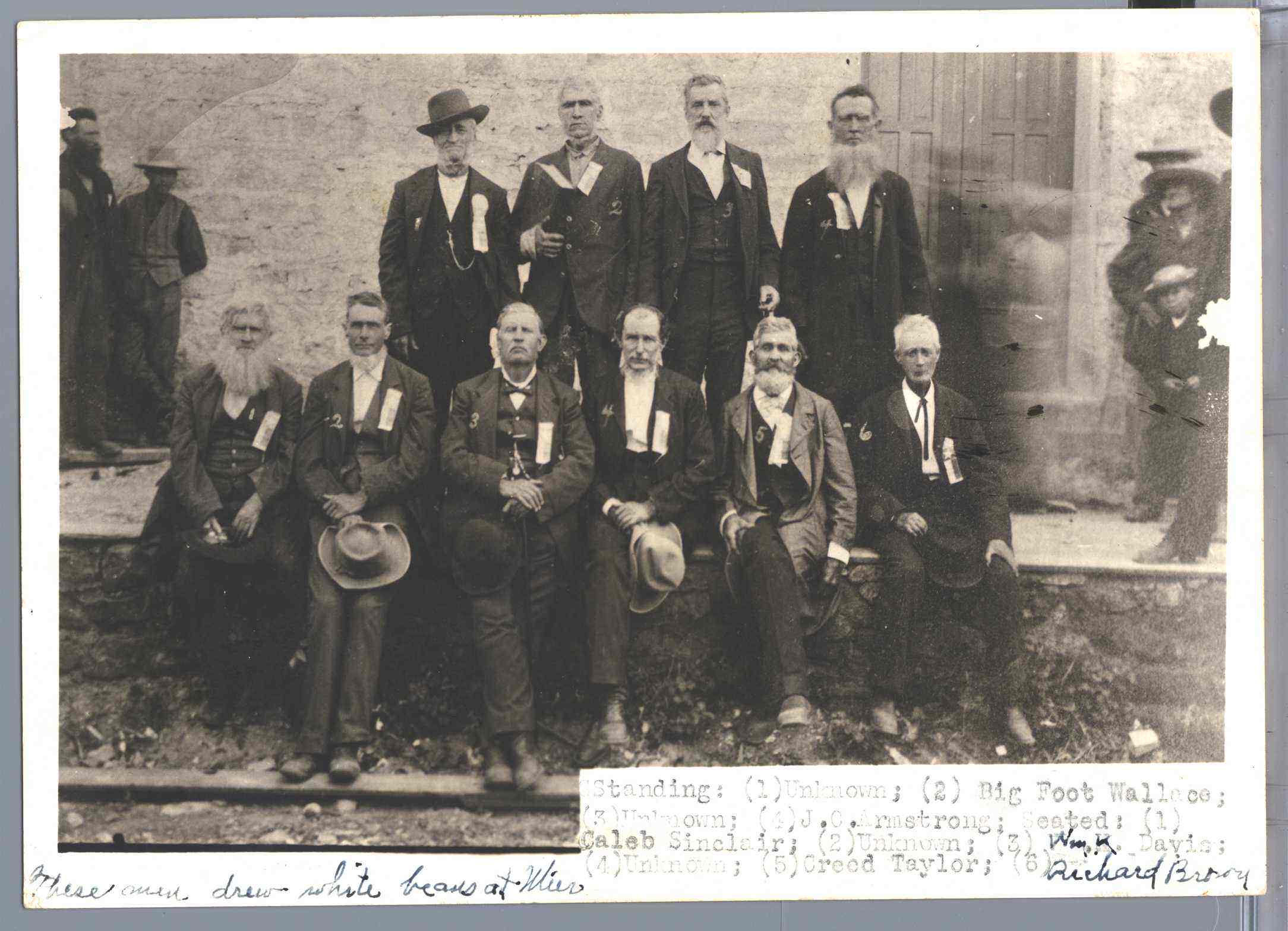
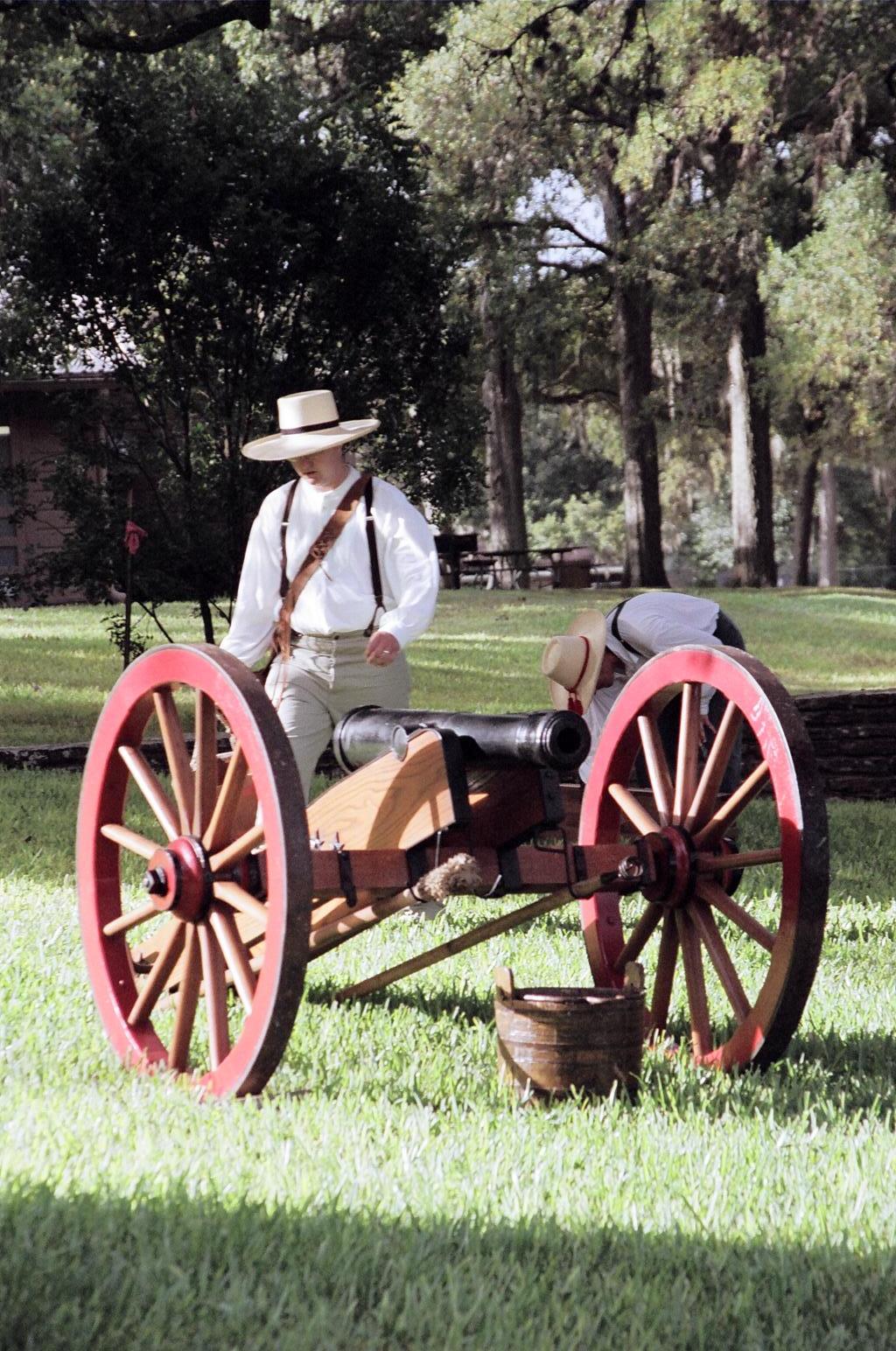
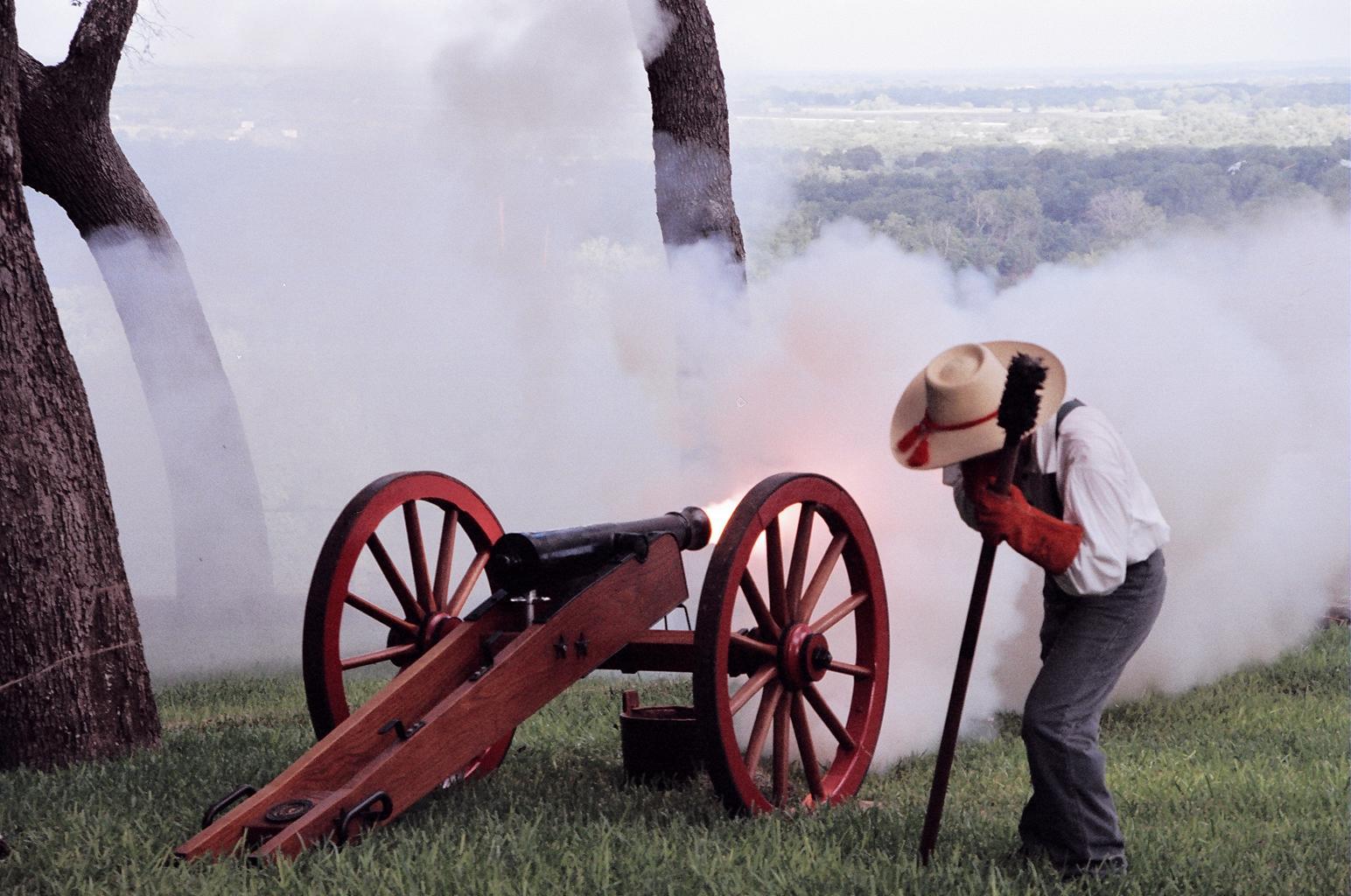



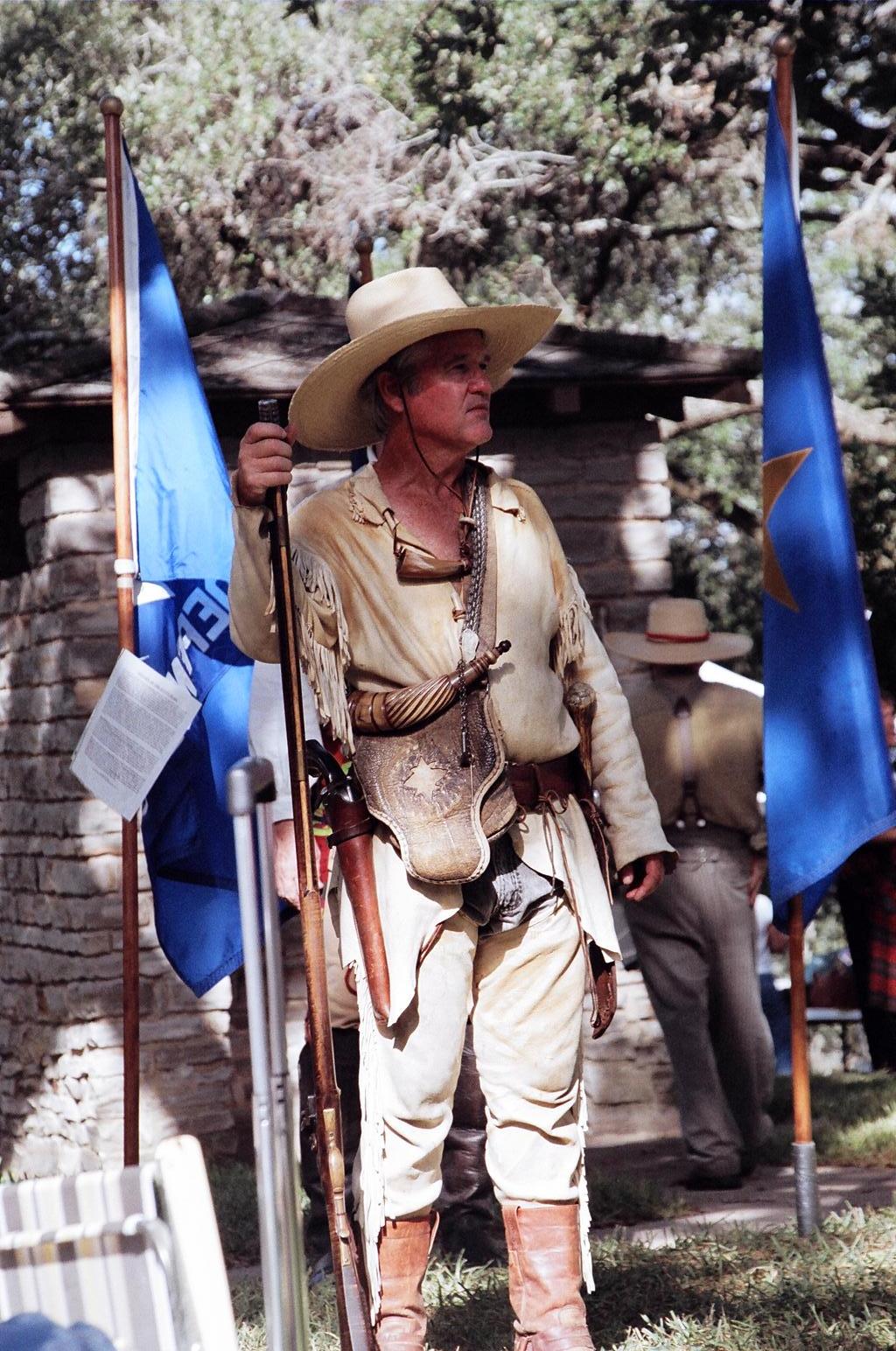

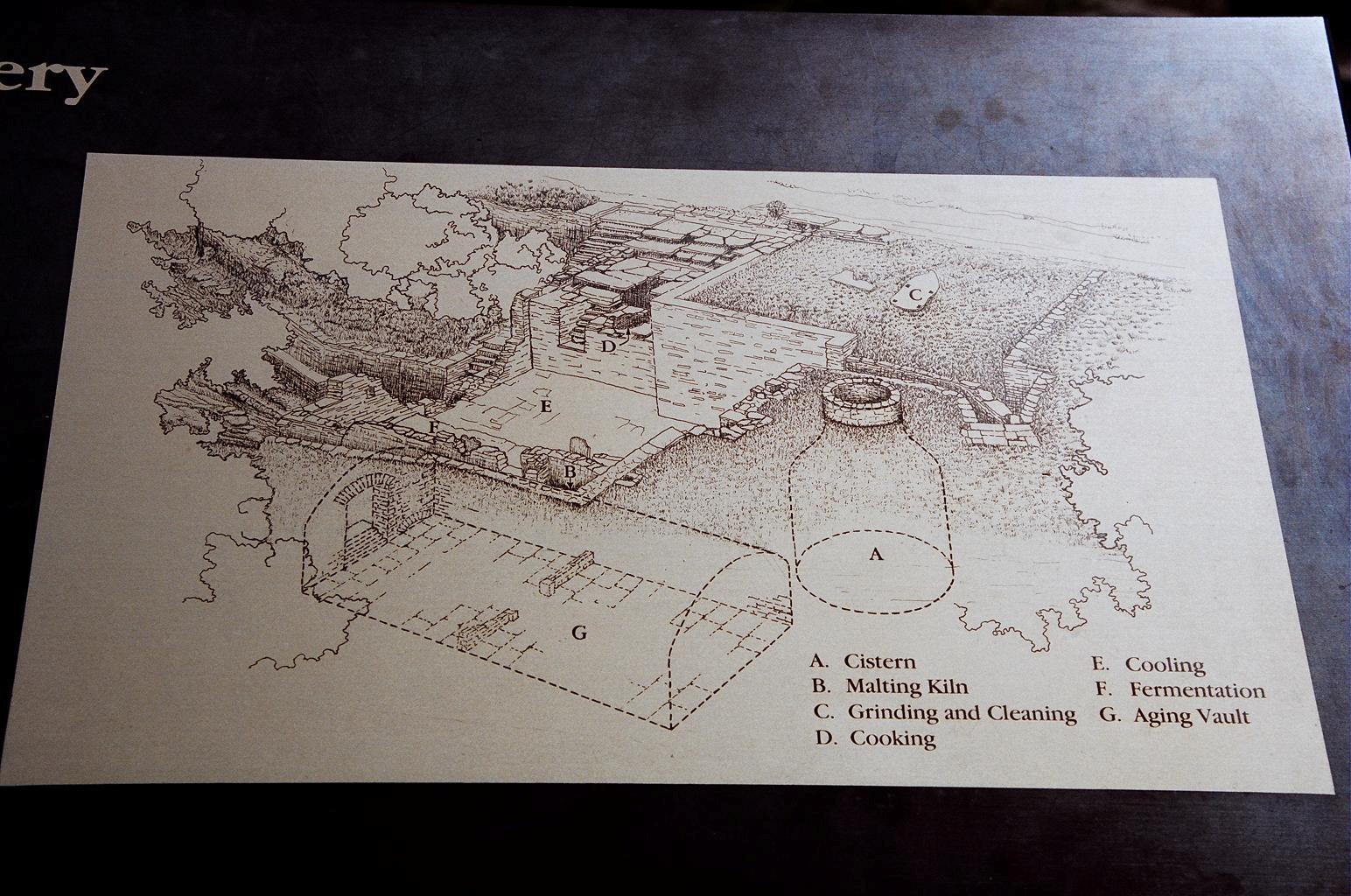
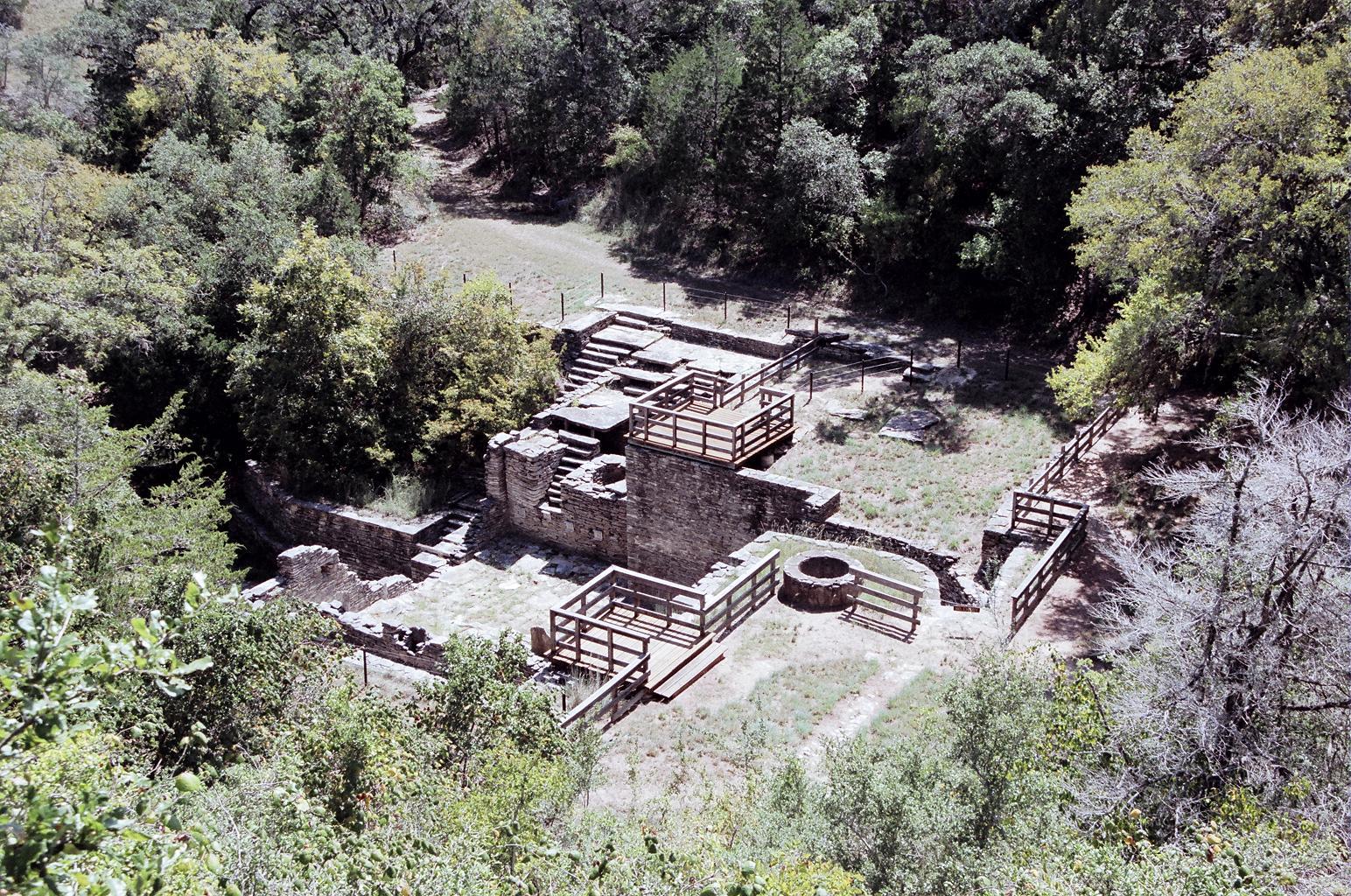
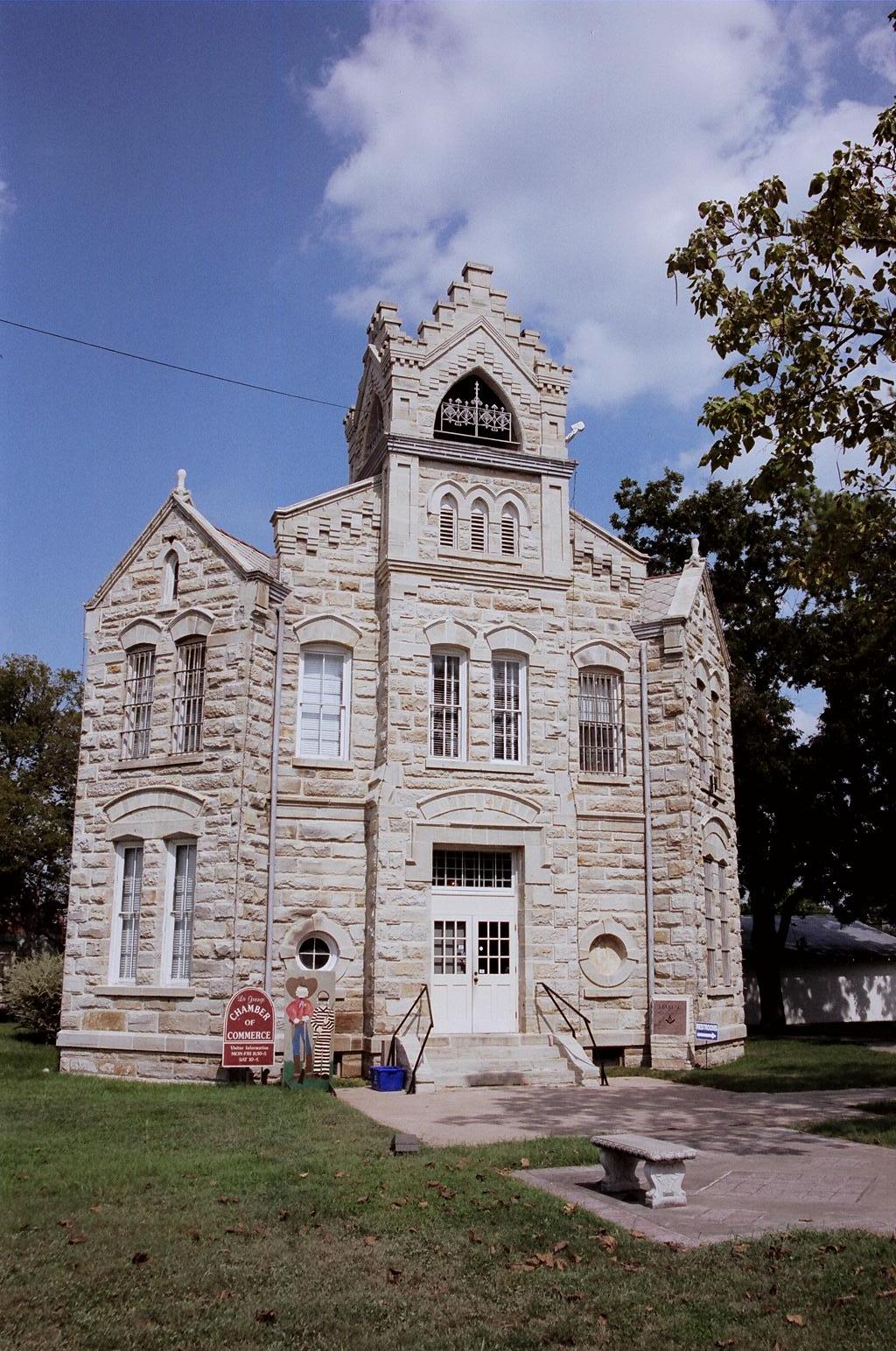 Fayette County Jail The Fayette County Jail was built in 1882. It is now occupied by the La Grange Chamber of Commerce, and a few ghosts according to the ladies that work there! One ghost in particular is the Widow Dach (see related story below*). As you enter the building the original steel door is still in place, where a marker is mounted stating that the jail was in use until 1985. A self guided tour is available, however, Rachel Bolfik, with the Chamber of Commerce, is very helpful and knowledgeable about the history of the jail. When you enter, there is a small hallway before entering the old cell area. Once inside, turn around and notice the “peep holes” that are still intact. These peep holes were used by jailkeeper so he could check any unusual noises and confirm if he needed to enter and break up any fights. The cells were very small and cramped. They often housed three inmates. There was only one bunk in each cell, so two inmates were left to sleep on the floor. Located on the jail house grounds are four cemented areas where the gallows were located. A rope is hanging inside the museum area of the jail, reminding you that hangings were carried out often in the state of Texas and in the city of La Grange.
Fayette County Jail The Fayette County Jail was built in 1882. It is now occupied by the La Grange Chamber of Commerce, and a few ghosts according to the ladies that work there! One ghost in particular is the Widow Dach (see related story below*). As you enter the building the original steel door is still in place, where a marker is mounted stating that the jail was in use until 1985. A self guided tour is available, however, Rachel Bolfik, with the Chamber of Commerce, is very helpful and knowledgeable about the history of the jail. When you enter, there is a small hallway before entering the old cell area. Once inside, turn around and notice the “peep holes” that are still intact. These peep holes were used by jailkeeper so he could check any unusual noises and confirm if he needed to enter and break up any fights. The cells were very small and cramped. They often housed three inmates. There was only one bunk in each cell, so two inmates were left to sleep on the floor. Located on the jail house grounds are four cemented areas where the gallows were located. A rope is hanging inside the museum area of the jail, reminding you that hangings were carried out often in the state of Texas and in the city of La Grange.

 The Infamous Chicken Ranch A report on the city of La Grange would not be complete without the inclusion of the Chicken Ranch. It was a bordello that remained in operation until August 1, 1973, until an expose was published by Houston reporter Marvin Zindler. Speculation exists on the actual year that the brothel opened. Miss Jessie Williams, (born Faye Stewart) bought a small house on the outskirts of La Grange in 1905 and established the bordello commonly known as the Chicken Ranch. The name “Chicken Ranch” was given to the bordello during the Great Depression, when sexual favors were exchanged for chickens or other livestock. Miss Jessie supplemented the livelihood of the ranch by selling the surplus chickens and eggs. She maintained good relations with the local authorities, and the sheriff made nightly trips to the ranch exchanging gossip with her. (Handbook of Texas Inline 1). Miss Jessie was very benevolent, making sure that she shopped with all of the local businesses. “My grandfather and father sold a lot of meat to the chicken ranch, and we always would know how many girls were out there because of the number of steaks that they would order. And Miss Edna would come in pick the meat up and leave, but that was way before my time” (Prause interview). Edna Milton acquired the chicken ranch in 1952 and continued the good relationship with the new sheriff, T. J. Flournoy. Rather than make nightly visits to the ranch as his predecessor had, Sheriff Flournoy had a direct line installed at the ranch so he could stay abreast of any news that Miss Edna might have to share. Rooms were added on as needed in a haphazard way, which gave the building a rambling appearance. The main building was moved to Dallas. The movie “The Best Little Whorehouse in Texas” resulted from the expose Zindler published. Unlike the Hollywood version, the house was never two stories tall, and neither Miss Jessie nor Miss Edna favored Dolly Parton, according to Kathy Carter. Also, Sheriff Flournoy did not look like Burt Reynolds.
The Infamous Chicken Ranch A report on the city of La Grange would not be complete without the inclusion of the Chicken Ranch. It was a bordello that remained in operation until August 1, 1973, until an expose was published by Houston reporter Marvin Zindler. Speculation exists on the actual year that the brothel opened. Miss Jessie Williams, (born Faye Stewart) bought a small house on the outskirts of La Grange in 1905 and established the bordello commonly known as the Chicken Ranch. The name “Chicken Ranch” was given to the bordello during the Great Depression, when sexual favors were exchanged for chickens or other livestock. Miss Jessie supplemented the livelihood of the ranch by selling the surplus chickens and eggs. She maintained good relations with the local authorities, and the sheriff made nightly trips to the ranch exchanging gossip with her. (Handbook of Texas Inline 1). Miss Jessie was very benevolent, making sure that she shopped with all of the local businesses. “My grandfather and father sold a lot of meat to the chicken ranch, and we always would know how many girls were out there because of the number of steaks that they would order. And Miss Edna would come in pick the meat up and leave, but that was way before my time” (Prause interview). Edna Milton acquired the chicken ranch in 1952 and continued the good relationship with the new sheriff, T. J. Flournoy. Rather than make nightly visits to the ranch as his predecessor had, Sheriff Flournoy had a direct line installed at the ranch so he could stay abreast of any news that Miss Edna might have to share. Rooms were added on as needed in a haphazard way, which gave the building a rambling appearance. The main building was moved to Dallas. The movie “The Best Little Whorehouse in Texas” resulted from the expose Zindler published. Unlike the Hollywood version, the house was never two stories tall, and neither Miss Jessie nor Miss Edna favored Dolly Parton, according to Kathy Carter. Also, Sheriff Flournoy did not look like Burt Reynolds.
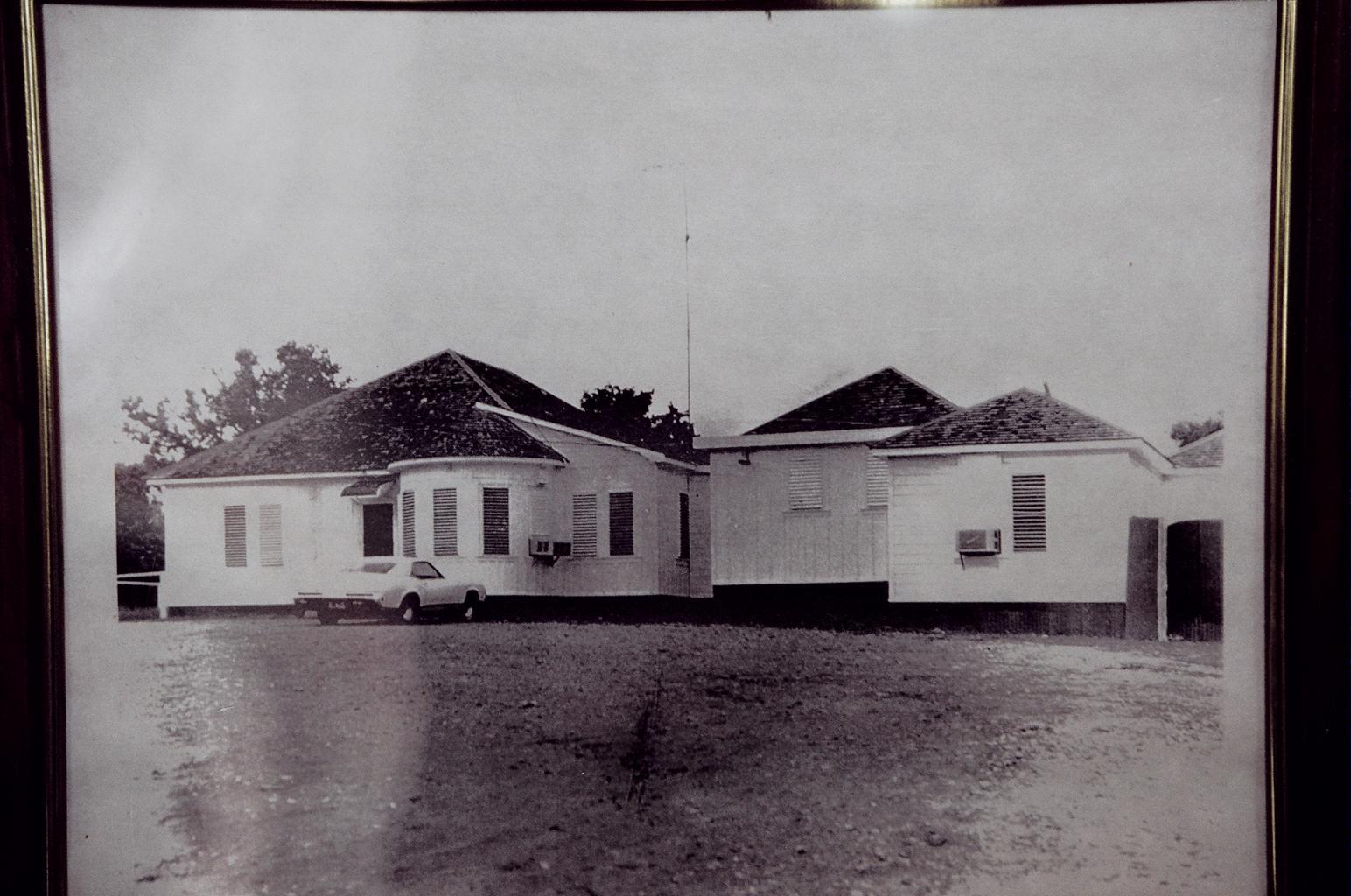
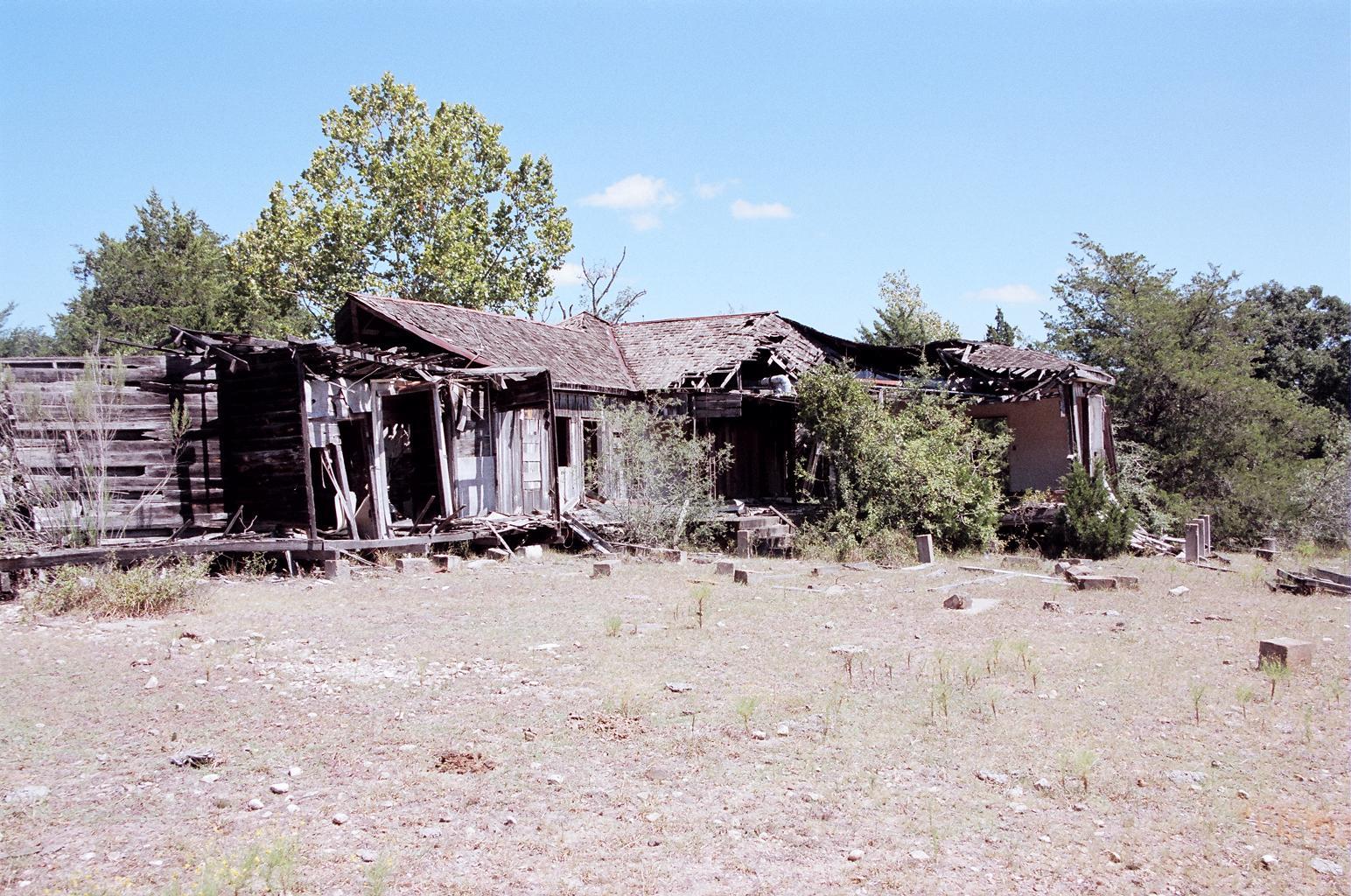
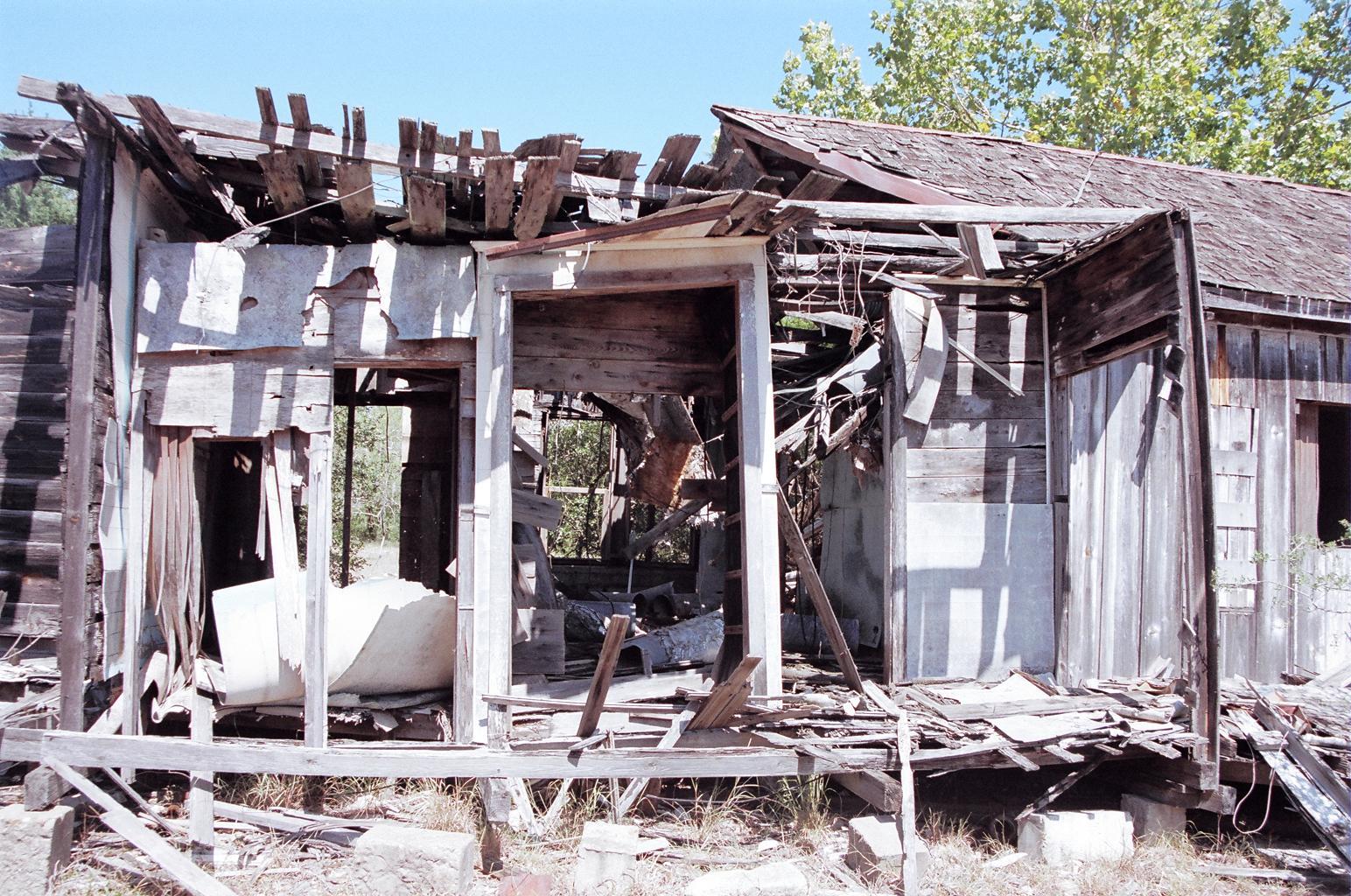
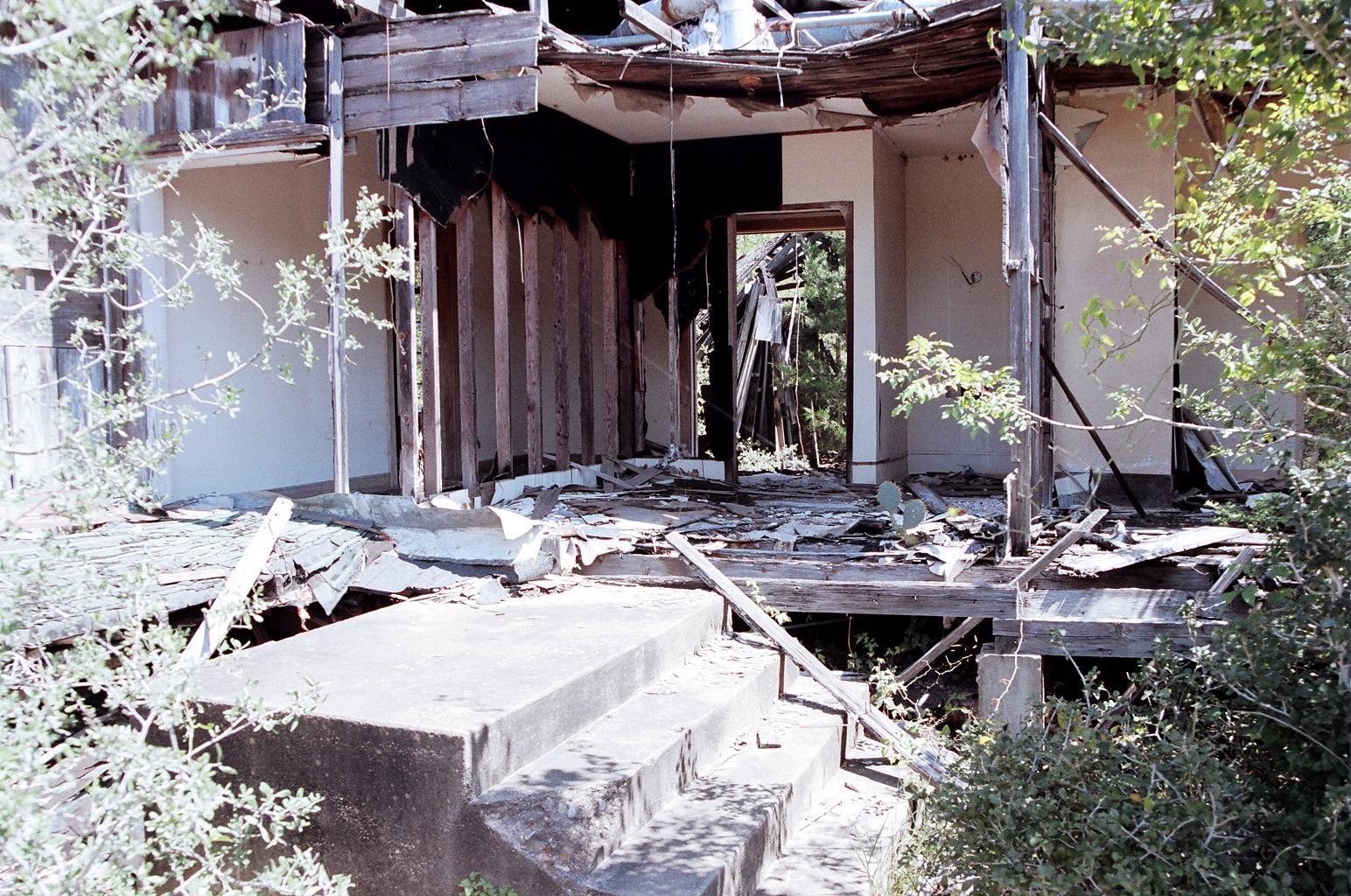

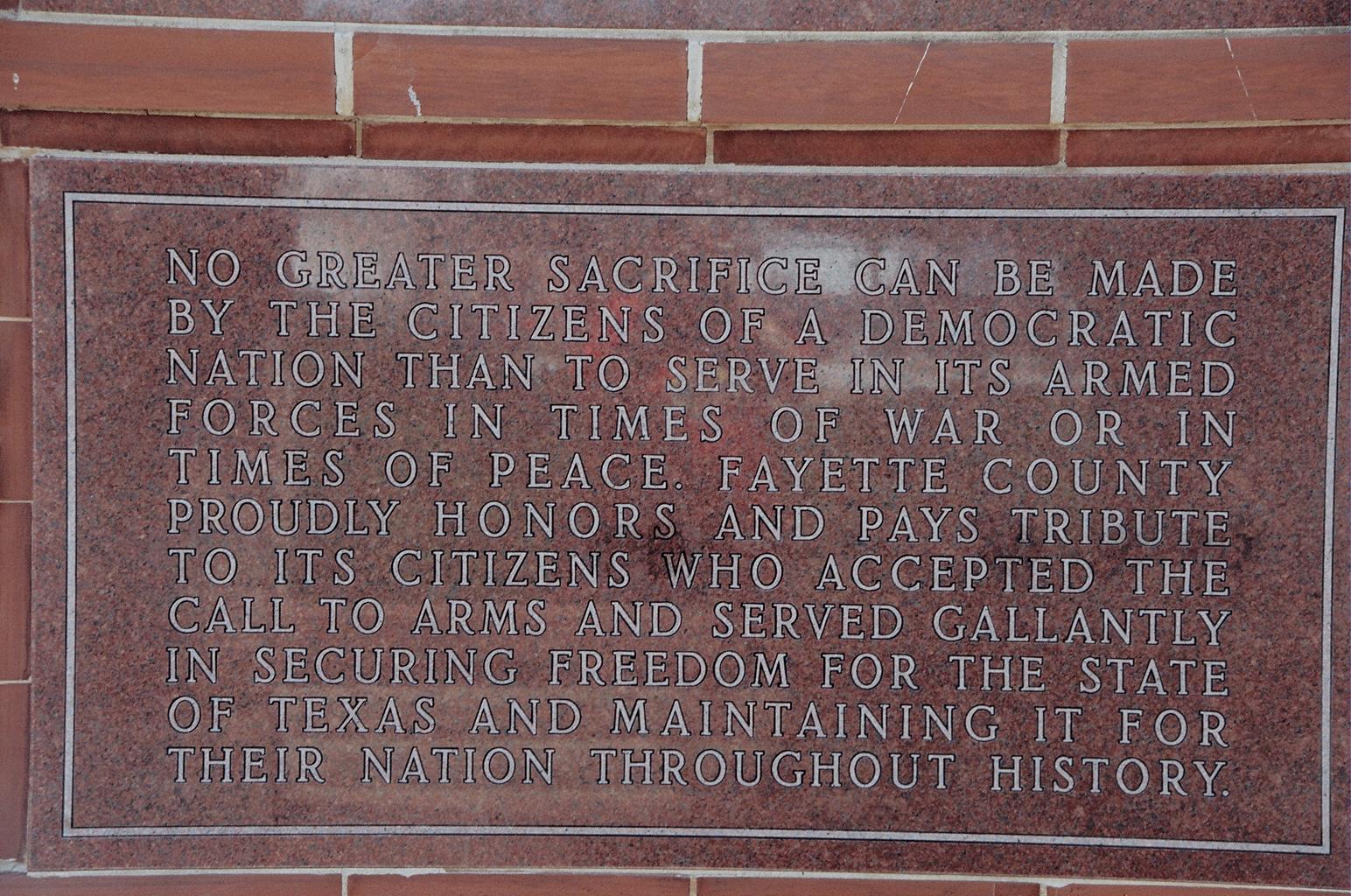
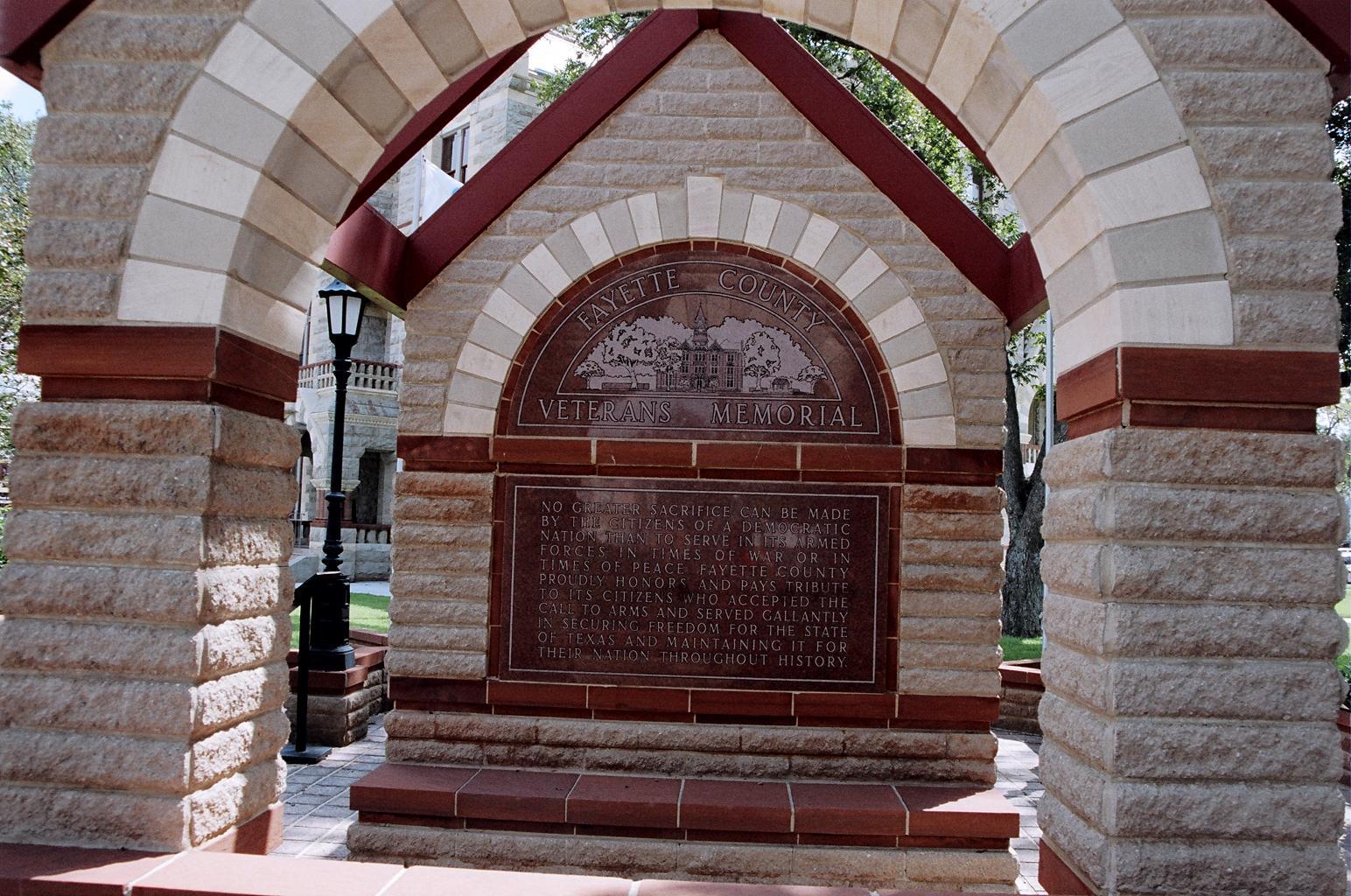
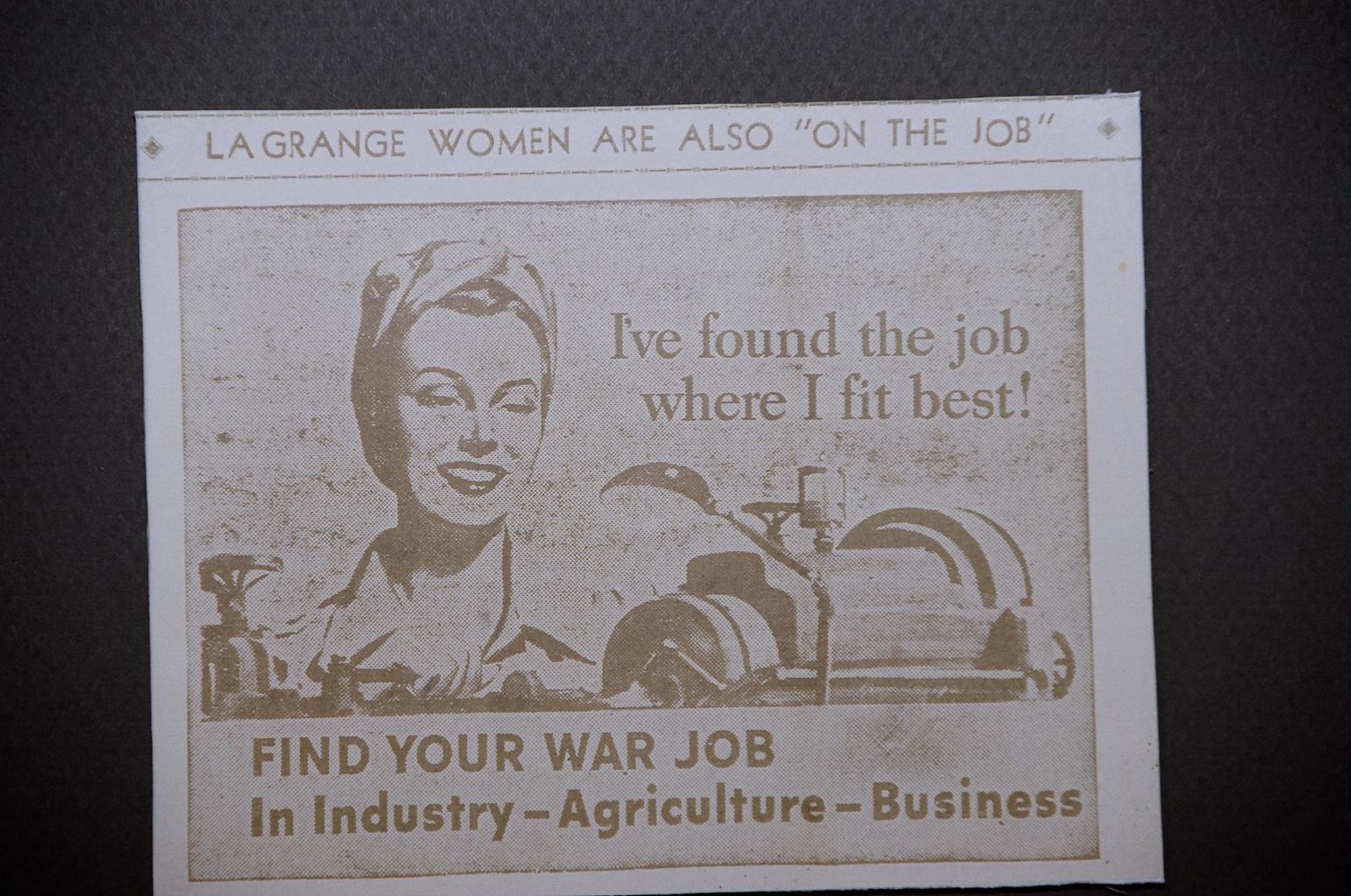 Wars – Fayette County has erected a Veterans Memorial located on the lawn in front of the courthouse. Plaques pay tribute to the Fayette County’s soldiers that lost their lives during World War I, World War II, the Korean War and Vietnam War.
Wars – Fayette County has erected a Veterans Memorial located on the lawn in front of the courthouse. Plaques pay tribute to the Fayette County’s soldiers that lost their lives during World War I, World War II, the Korean War and Vietnam War.